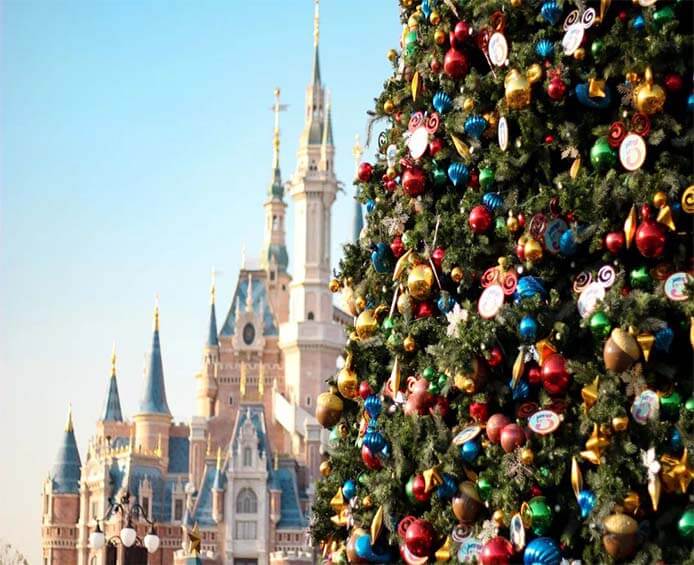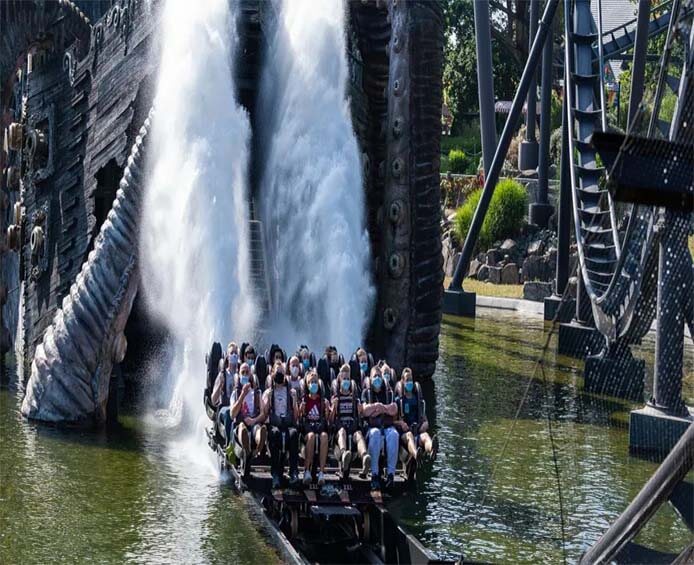The theme park has a kind of magic, whether it is a three-year-old child or a 50-year-old sister, after stepping through that magical door, they all become happy babies, creating a space that makes people concentrate and happy, and isolate the unpleasant factors as much as possible— – This is a very powerful thing.
How to build a fun theme park from scratch? There is a manual here.
The first thing to consider before finding a suitable topic is site selection. In addition to determining the mode of transportation and travel costs for tourists, site selection can greatly affect passenger flow. The Washington Urban Land Research Institute believes that the primary source market of a large theme park (within 80km or an hour’s driving distance) requires at least 2 million people; the secondary source market (within 240km or within a three-hour driving distance) is To have a population of more than 2 million – this was only a requirement in the 1990s.The closer it is to a megacity with a population of 10 million, the more worry-free it is. Counting the layout of Disney and Universal Studios, they almost all choose popular tourist cities in China, the United States, Japan, France, Spain and other places.
Not all story themes are suitable for parks. In general, a suitable candidate needs to have these factors: a strong theme, popular recognition, rich and direct plot, iconic scenes and characters.Theme parks need to allow tourists to understand the theme in the shortest time, so it is best to extract elements from ready-made stories, and the story should not be too complicated, and it needs to have some memory points. For example, when you see the ugly duckling, you think of the theme of growth and transformation. In addition, most theme parks are parent-child positioning, and the stories are suitable for all ages.
After the theme is confirmed, all the designs of the park must move closer to it and serve it. Disney is an expert in this area. It focuses on building a fantasy land that is detached from the real world. The pursuit of dreammaking goes deep into every detail. CRĒO, the company that designed the signboard for Shanghai Disney, once said that when they work, they need to consider the color, font, style, material, whether to use Chinese or English, whether to use carving, how to integrate with the surrounding environment, etc. There are many factors to consider. And Disney’s own design team doesn’t even call itself a designer, they call themselves Imagineer — a fantasy engineer, a self-made word.
The creation of immersion mainly depends on spending more money. Tokyo Disney bought about 300,000 trees to cover the exterior buildings. And Orlando Disney, which was built in 1971, directly bought the land around the park and controlled the surrounding environment of the park in its own hands. In the end, this paradise “grown” to 122 square kilometers, which is equivalent to the entire area of Shangcheng District, Hangzhou.

Simply put, it is good to create a visual system to do two things – visual attraction and visual isolation. Visual attraction is to make everything visitors see in the park consistent with the theme, including but not limited to signboards, lighting, architecture, traffic, plants, clothing, and the environment. And the visual elements should be as realistic as possible. In a book documenting the creation of Disneyland, the story of a contractor who wanted to replace wrought iron with plastic was rejected by founder Walter. “If the design elements aren’t real, it’s hard for guests to shake off their suspicions and put themselves in the story,” says book author Chris Nichols. To promote the Tomorrowland campus, Disney also sought technical advice from NASA scientists Wernher von Braun, Willy Ley and Heinz Haber—the effect was that in 1955, the American Rocket Society included visiting Disney as part of a regional meeting. Visual imagery should be as generic as possible to be relevant to all age groups. Abstract art sculptures are not suitable for being placed in the park, which will interrupt the tourists’ thinking of play and greatly reduce the sense of experience.
And visual isolation is the factor where shielding doesn’t match the theme. In addition to buying trees and land to isolate the surrounding environment, the tall Cinderella Castle in the middle of the park is also a visual game played by Disney. This is not only to prevent drama, but also because people’s attention is limited. Liu Daohong introduced that people can only pay attention to one thing at a time. Although other information has also entered your eyes, the brain has automatically filtered out other information. So when your eyes are drawn to the central castle, you probably won’t notice the small mounds that are still under construction around the park. But it is difficult to do this. “The trouble with the theme park is that it is too complicated. There are too many things to coordinate with shops, performing arts, cleaning, and greening.” Liu Daohong said. For example, the cola stand in the Tang Dynasty Paradise is often because the cooperative merchants want their brands to be exposed, and they hope that the logo “the bigger the better”. If the merchants and the park party do not negotiate well, the result is embarrassment for tourists.
Of course other senses also play a role. In addition to the unified theme music, the theme park will also design different background music according to the partition. Some more elaborate theme parks also use the sense of smell to enhance cognition, but Liu Daohong believes that the sense of smell is more dangerous, because people’s cognition of smell is more dependent on individual experience and cultural background, and it may smell like bananas to some people. , but was smelled as decoration water by others.
